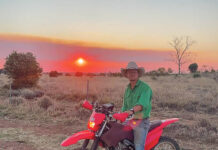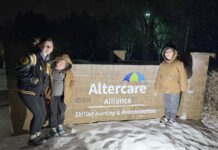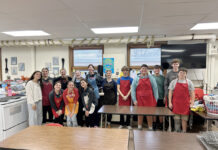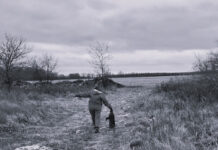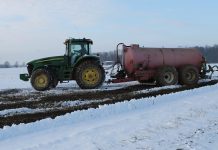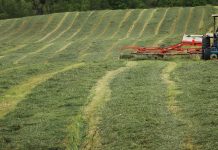Present day maps contain names of villages, larger towns and cities, but no publication offers names of old crossroads communities that were once known by people for miles around. Those names will soon be lost for all time.
My three older sisters hold vibrant memories of community club meetings in our Eckley-area neighbors’ homes, though I only experienced the fun by watching old home movies that our mother filmed.
“Let’s have movies tonight!” Dad might say, and Mom would get the reel-to-reel player out while my big sisters popped popcorn.
Cloyd McNaull Jr. shared his knowledge of the historic Eckley Community in north-central Ohio, which was home to the very first church, school and a cemetery on donated land in this area. “Think of it! The War of 1812 had just ended, and there were Native American Indians all around here when the first school was built, a log cabin, in 1815. It housed its first class in 1816,” he said.
The Eckley Church, also a log cabin, was built by Mr. Eckley in 1815 and 1816. Eckley’s first name is unknown, and little was passed down about him. After all his work, a fire burned the building just one week after completion. One bench removed from the burning church by Daniel Smith Jr. remains in the home of McNaull’s nephew, Dan McNaull, and his wife, Debbie, who own the McNaull historic homestead.
Eckley was the first church in the area, and many were excited to attend. After the fire, it was more quickly rebuilt, opening for a second time later in 1816, and people came great distances to enjoy church together. It was during this time that the Eckley cemetery was laid out.
Word of the opening of a church became known to the settlers, and folks from Mansfield in Richland County, about 20 miles away, held conferences at the church.
The Eckley school building was repaired numerous times and then torn down (its lumber used to build a house in nearby Jeromesville), and a frame building was erected in 1840. It stood and served students until 1929 when all one-room schoolhouses in the area were closed and replaced by larger schools in Jeromesville and Hayesville, Ohio.
Attendance in the late 1800s rose to 70 to 80 students, ranging in age up to 20.
Cloyd “Junior” McNaull’s parents both attended school there, and his mother later taught there, with my grandmother, Helen Myers Young, as one of her students.
McNaull and I both have early settler ancestors buried in the Eckley Cemetery, one of the very oldest cemeteries in the area. A Revolutionary War soldier is buried there, as well as Civil War soldiers.
Eckley native Adam Bahn, imprisoned during the Civil War, boarded the Sultana in April, 1865 in New Orleans to return home. The steamboat’s designed capacity was 376, and though the full count on board is unknown, estimates put it at about 2,250 to 2,300 men, many of whom were ill, traveling in wet, rainy conditions. A greedy ship captain was paid 10 cents for each aboard and set no limits.
When the horrifying happened and the steamboat exploded on April 23, 1865, the lives of some 1,700 to 1,800 were lost, 14 of whom were from Ashland County, Ohio.
Adam Bahn, so close to having survived the ravages of the Civil War and a long imprisonment, lost his life aboard the Sultana and is laid to rest in the quiet Eckley Cemetery.
The tightly tree-lined, rural setting filled with ancient soapstone monuments from such a long-gone era evokes feelings no other cemetery I have ever attended has managed to do. Set apart from the world, there is no sense of time marching on outside its cocoon.
Standing beside graves of the very young is evocative, harkening back to souls who walked this land for such a short time. There is a weight, a mysterious, other-worldly energy, almost a haunting feeling in that plot of ground.
McNaull mentioned it first, and each of us visiting at the home of Junior and his wife Mary Ann one day last week agreed we have experienced that very unique feeling there and no other place.



